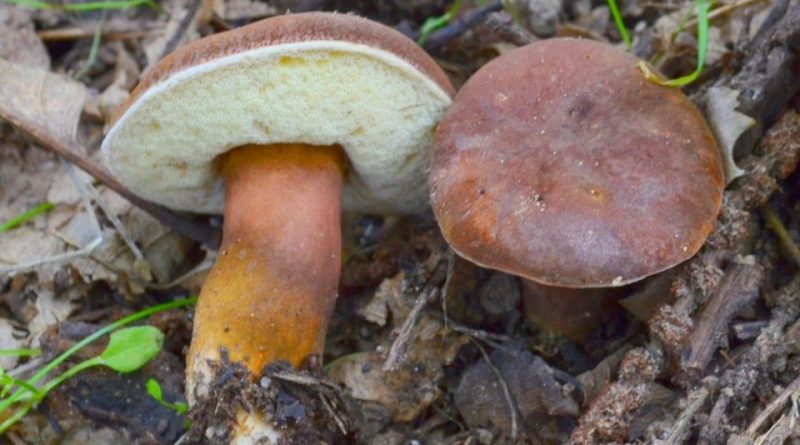Gyroporus castaneus
Gyroporus castaneus
The Brown Boleto (Gyroporus castaneus (Bull.) Quél., 1889) is a basidiomycete mushroom belonging to the Gyroporaceae family.
Systematics –
From the systematic point of view it belongs to the Eukaryota Domain, Kingdom Fungi, Basidiomycota Division, Basidiomycetes Class, Order Boletales, Family Gyroporaceae and then to the Genus Gyroporus and wing Specie G. castaneus.
Etymology –
The term Gyroporus comes from the Greek γῦρος gýros circle, circle and from πόρος póros poro, passage: with round pores. The specific castaneus epithet derives from Castánea: brown in color or growing in chestnut woods.
Geographic Distribution and Habitat –
The Gyroporus castaneus grows solitary or in small groups in the deciduous forests, under Oak, Chestnut and Beech and rarely under the conifers, in clearings, often in the paths on the bare ground. It prefers acid soils and fructifies in the period between summer and autumn.
Recognition –
The Brown Boleto is recognized for having a hat of 4-10 cm, first hemispherical, then convex and finally flat-depressed, with a velvety cuticle, almost smooth or a little ‘tomentosa, reddish brown, similar to that of chestnut. The tubules are up to 15 mm, free and whitish, separable. The pores are roundish, white and then yellowish. The stem is 4-8 x 1-3 cm, cylindrical, easily separable from the hat, first full then spongy-cavernous, colorless to the hat. The meat is fragile and white, with pleasant smell and taste. Microscopic spores of an ovoid-shaped yellow color can be seen under the microscope.
Cultivation –
The Brown Boleto is not a cultivated mushroom.
Uses and Traditions –
Gyroporus castaneus is defined by some authors as a good edible, while for others it is considered “suspect”, reporting cases in which gastrointestinal problems have occurred.
Concerning possible confusions and distinctions, it should be noted that the species of Gyroporus (Pore Bolets and White Tubules) are two: Gyroporus castaneus and Gyroporus (Boletus) cyanescens. The latter, also good edible, is easily distinguishable by the light color of the carpophorus and by the sharp change in the blue of the meat exposed to the air. In addition, the color and habitat make it look like Tylopilus felleus (Bull .: Fr.) Kartsen, which is toxic, but the latter has a full stem, covered with a raised pattern, with rosy-amethyst pores at maturity and it is also very bitter. Gyroporus ammophilus (M.L. Castro & L. Freire) M.L. Castro & L. Freire, growing in a sabulicolous environment, can have blue hues in meat and widespread salmon chromatisms and is responsible for intoxication phenomena with gastrointestinal effects.
Preparation Mode –
Regarding preparation and edibility it is advisable to remove the stem and if consumed raw or undercooked, it can cause gastrointestinal problems, so it is advisable in any case to consume it cooked.
Guido Bissanti
Sources
– Wikipedia, the free encyclopedia.
– Cetto B., 2008. Real mushrooms, Saturnia, Trento.
– Pignatti S., 1982. Flora of Italy, Edagricole, Bologna.
– Conti F., Abbate G., Alessandrini A., Blasi C. (edited by), 2005. An annotated checklist of the Italian vascular flora, Palombi Editore.
Warning: Pharmaceutical applications and alimurgical uses are indicated for informational purposes only and do not in any way represent a medical prescription; there is therefore no liability for their use for curative, aesthetic or food purposes.


